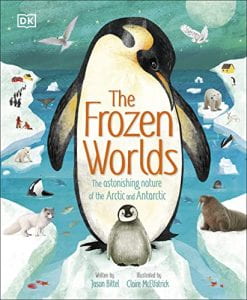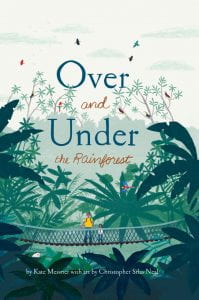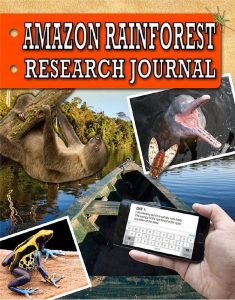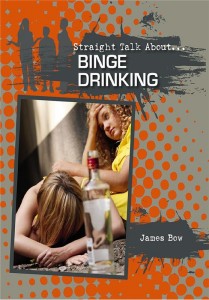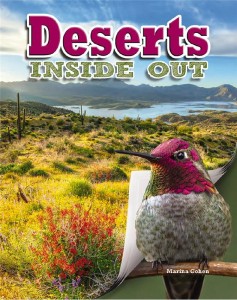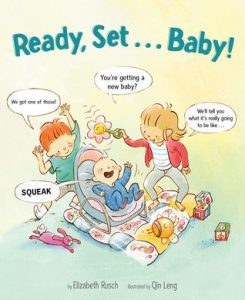
Rusch, Elizabeth. Ready, Set…Baby! Houghton Mifflin Harcourt, 2017. 978-0-544-47272-3. Unpaged. $17.99. Gr. PreK-K.
Big siblings Anna and Oliver have a new baby at home, so they’re prepared to offer advice to any kid whose family has a new baby on the way. “Lots of people are probably telling you what to expect, but kids in the know can give you the real deal.” Author Elizabeth Rusch gives practical advice and information for new big siblings as Anna and Oliver tell the story of their sister’s arrival, along with a lot of advice on the days and months that followed. Sections detail “The Big Wait,” “Meet the Conehead”, “The Real Scoop on Baby Poop,” and more. Information is basic yet helpful. “At first, our baby got to stay up later than we did!” (“It’s all that napping…” says Oliver sullenly in a speech bubble, common throughout the story). Colorful, cartoonish illustrations complement the information, and kids will love the family’s curious brown dog. Extra resources include “More Stuff About Life with a New Baby,” a list of helpful websites and books, and “Tips for Parents on Life with Big Kids and New Babies.” THOUGHTS: A funny and helpful book for new big brothers and sisters who are old enough to appreciate the humor and understand the information.
306.87; Family Structure Lindsey Long, Lower Dauphin School District
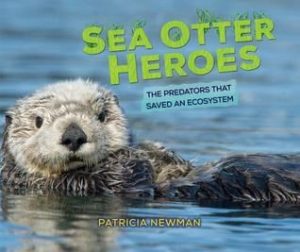
Newman, Patricia. Sea Otter Heroes: The Predators That Saved an Ecosystem. Millbrook Press, 2017. 978-1512426311 $25.95 56 pp. Grades 3-8.
“What does a playful sea otter have to do with flowering seagrass that grows underwater?” In this book, Patricia Newman follows marine biologist Brent Hughes as he works in the intertidal area of Elkhorn Slough in Northern California. Hughes observed that although the Slough is the recipient of heavy pollution from fertilizer and should be heavily polluted with dead or dying seagrass, the seagrass in the Elkhorn Slough is “healthy and lush and green” (7). Hughes set out to discover what made this happen. Newman tracks Hughes’ work and his thinking as Hughes eventually discovered it was: the sea otters. The sea otters an apex predator reduce the number of sea crabs, which in turn leads to an increase in the sea crabs’ food of choice: the sea hares. It is the sea hares which rid the seagrass of the algae which would otherwise smother and kill it. Thus the presence of sea otter influenced the health of the entire Slough. This book presents the scientific method and the work of marine biologist Hughes in an interesting ‘solve-the-mystery’ light. The page spreads are colorful and accompanied by full-color photographs and sidebars illustrating important concepts. Newman also spends a chapter focusing on the full range of Hughes’ education and work, and ends with a doable experiment and ways to positively impact the environment. Source notes, glossary, bibliography, further reading, and index. A positive read for middle and high schoolers interested in marine biology and science careers. Teaching Guide available through Titlewave. Readers may also be interested in Newman’s post Newman, Patricia. “Giving Readers a Front Row Seat.” Nerdy Book Club Blog. 15 May 2017. nerdybookclub.wordpress.com/2017/05/15/giving-readers-a-front-row-seat-by-patricia-newman/. THOUGHTS: Newman’s book is an accessible, realistic look at the work of current scientists, and is a fantastic addition to science, career, and STEM collections for middle and high school.
599.769; Sea Otter Melissa Scott, Shenango High School

Glatzer, Jenna. Beacon to Freedom: The Story of a Conductor on the Underground Railroad. Capstone, 2017. 978-15157-34963 $21.49 40 pp. Gr. 3-6.
A short but impactful biography of John Rankin, a reverend and abolitionist who saved over 2,000 lives before the end of the American Civil War. Raised by religious, abolitionist parents, John believed strongly that no human being should own another. He set out to talk his Kentucky neighbors into setting their slaves free, but none wanted to let go of their free labor, and so Rankin, his family, and his unsettling talk were compelled to move. When they settled in a house in Ohio (a free state) along the Ohio River, John placed a lamp in the window each night. The lamp served as a beacon to tell slaves, “make it to this house—across the river into Ohio—and you will have help”. Many did. Many slave-holders suspected the Rankin family’s work, but raids and harsh treatment did not uncover anything nor frighten John and his family. The digital illustrations show frantic, desperate slaves and often-angry slave owners. Several stories of escaping slaves make their plight more personal. The content is suitable for upper elementary. Afterword, glossary, source notes, index. THOUGHTS: An inspiring biography of a man who stood up for others’ rights.
326 Abolitionists; Picture Book Biography Melissa Scott, Shenango High School
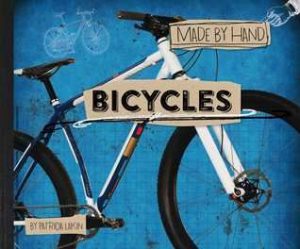
Lakin, Patricia. Bicycles (Made by Hand series). Aladdin, 2017. 978-1-4814-7896-0. $17.99. 32 pp. Gr. 2-5.
With a voice that is conversational and relatable, Patricia Larkin grabs readers and takes them for a ride! Readers soon see not just the joy and history of bikes, but also the dreams of one maker who wanted to build his passion into a business. Along the way, we meet Aaron Dykstra, who has always loved bicycles and decided to start making them for a living. The bulk of the book shows the effort and process that he uses to create the frame of a new bike, including many close up photographs designed as a step-by-step scrapbook of sorts. The challenge at the end to explore STEM concepts and make your own inspirations, as well as the detailed timeline and resource list, should be enough to draw in scientists, makers, and bikers alike. Get ready to ride! THOUGHTS: This narrative nonfiction style is very approachable, and the photos help readers to connect to the text easily. This is part of a new series (Made by Hand) which also includes Skateboards and Steel Drums. I think this would be great for tinkerers and hands on readers to explore and get inspired.
629, Transportation Dustin Brackbil, State College Area
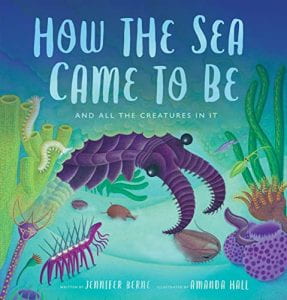 Berne, Jennifer. How the Sea Came to Be (and All the Creatures in It). Illustrated by Amanda Hall. Eerdmans Books for Young Readers, 2023. 978-0-802-85478-0. $18.99. 56 p. Grades 2-5.
Berne, Jennifer. How the Sea Came to Be (and All the Creatures in It). Illustrated by Amanda Hall. Eerdmans Books for Young Readers, 2023. 978-0-802-85478-0. $18.99. 56 p. Grades 2-5.
